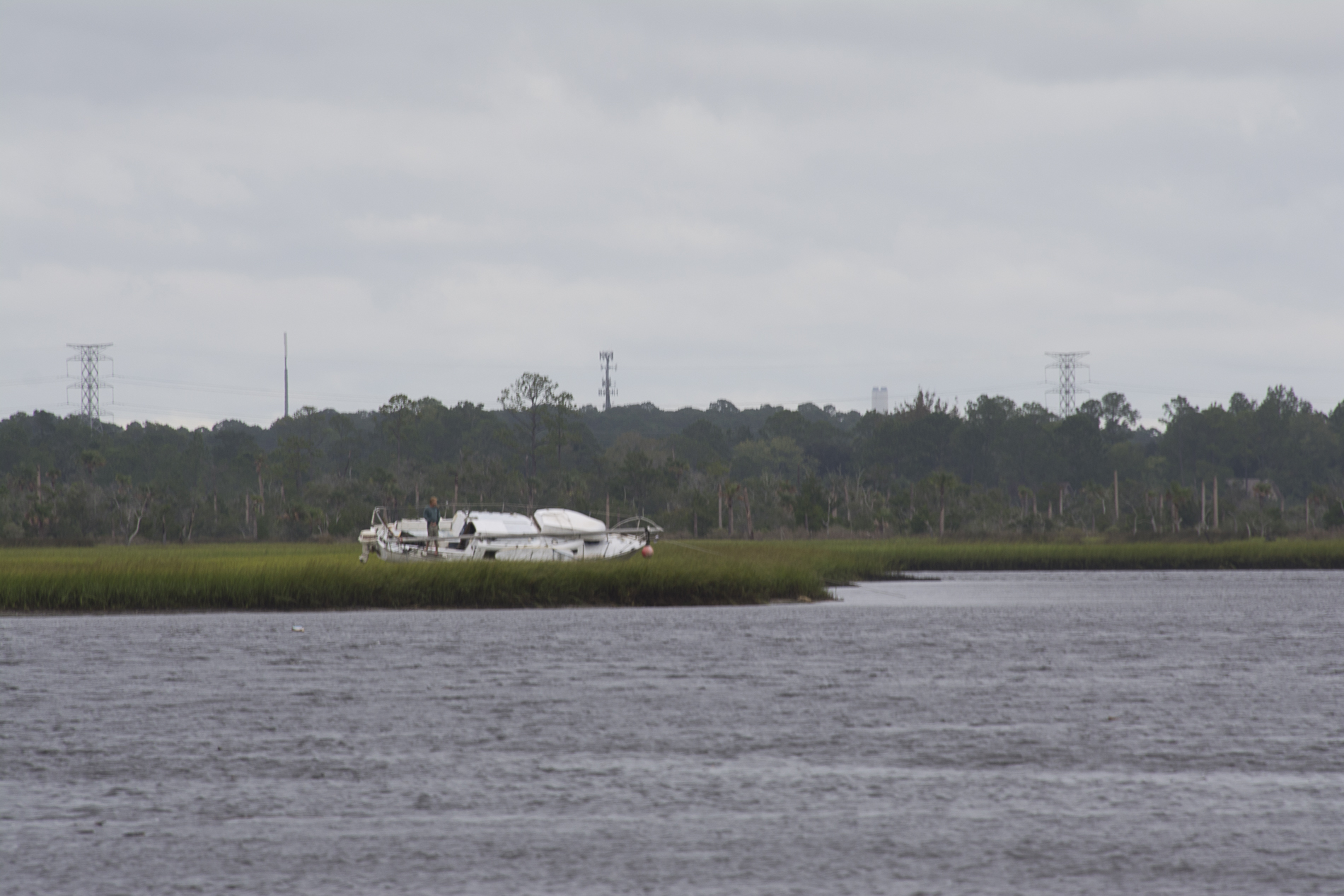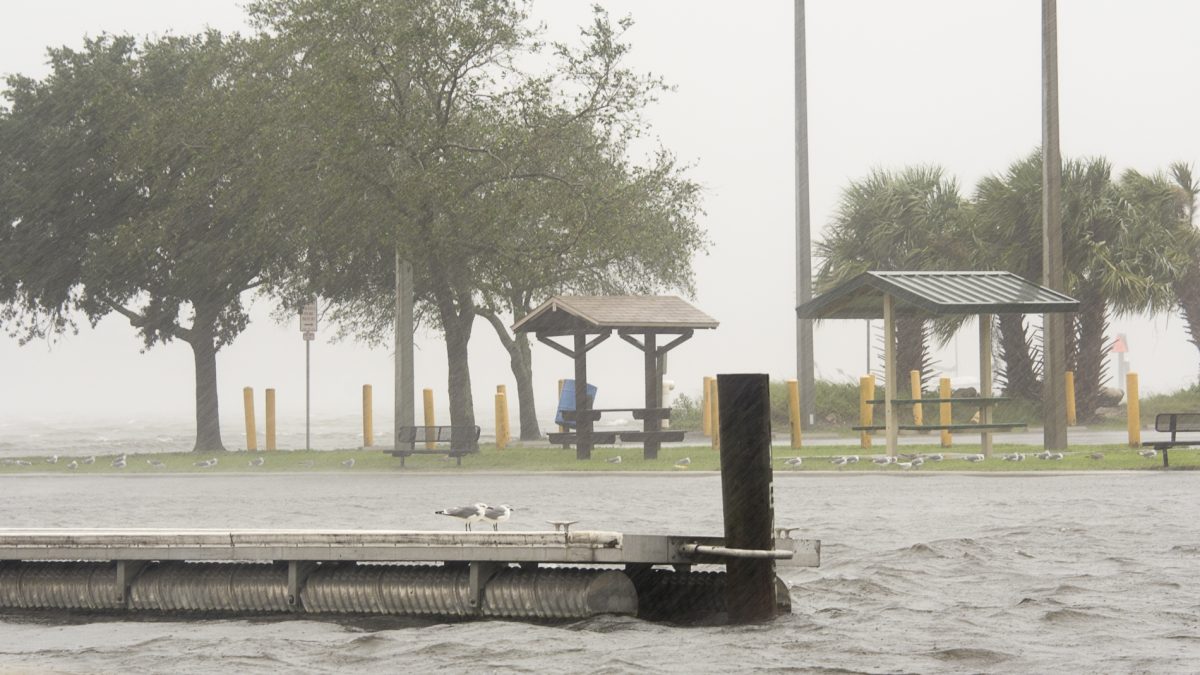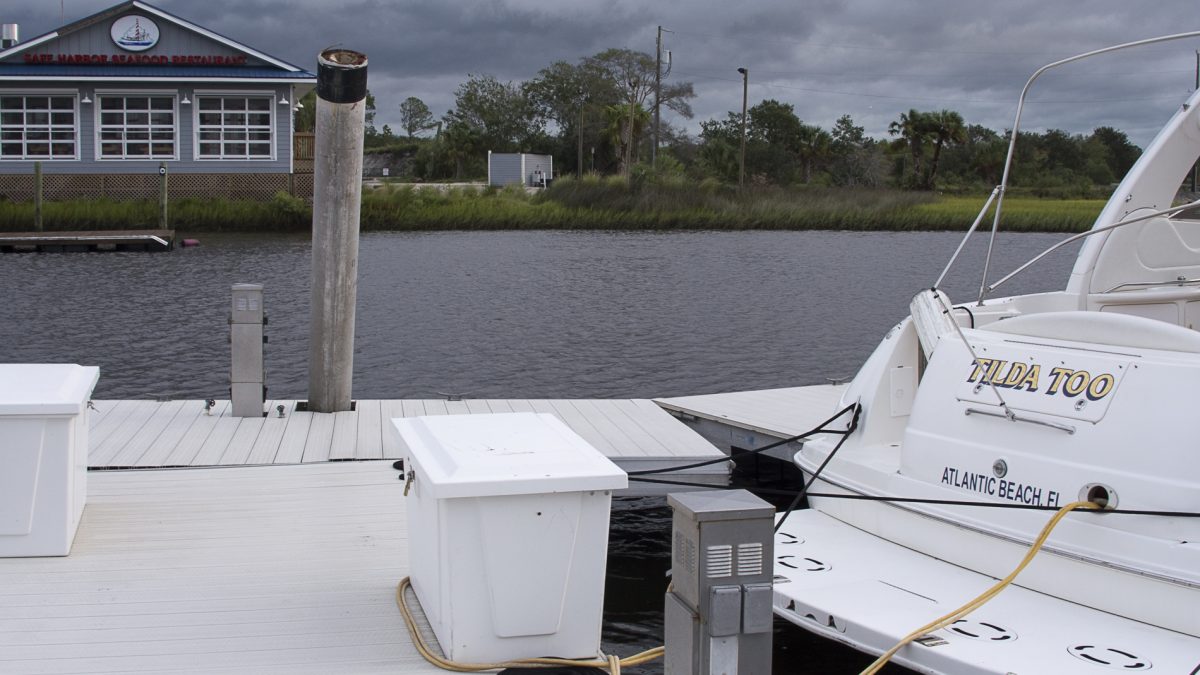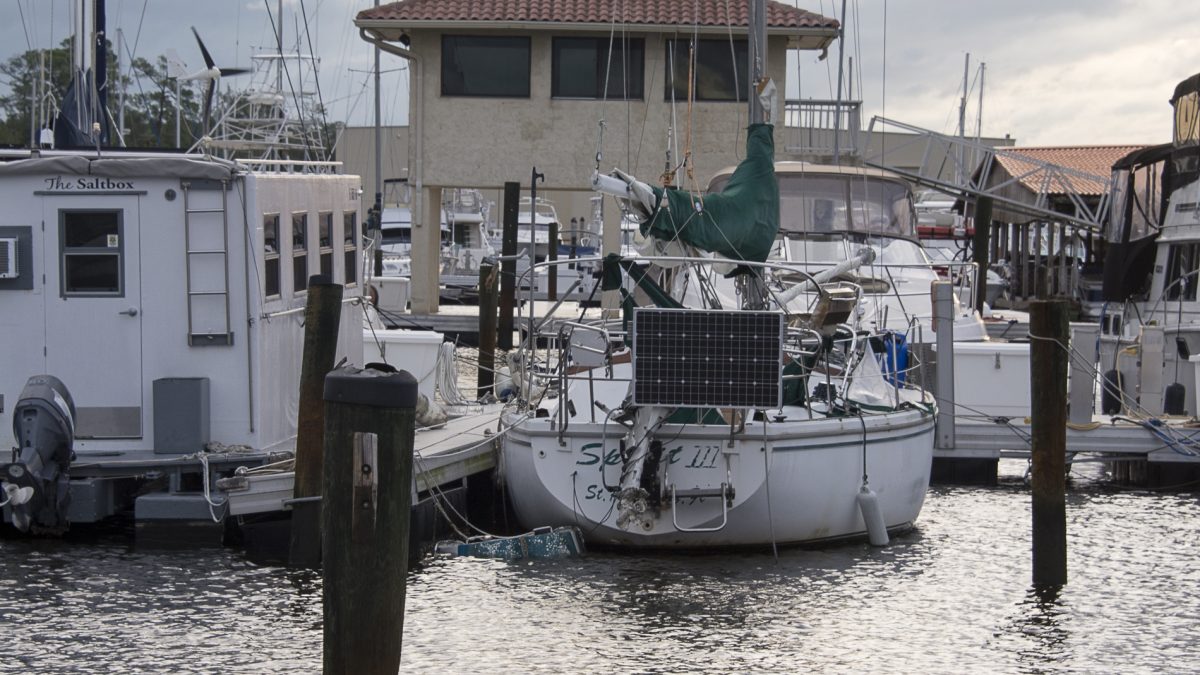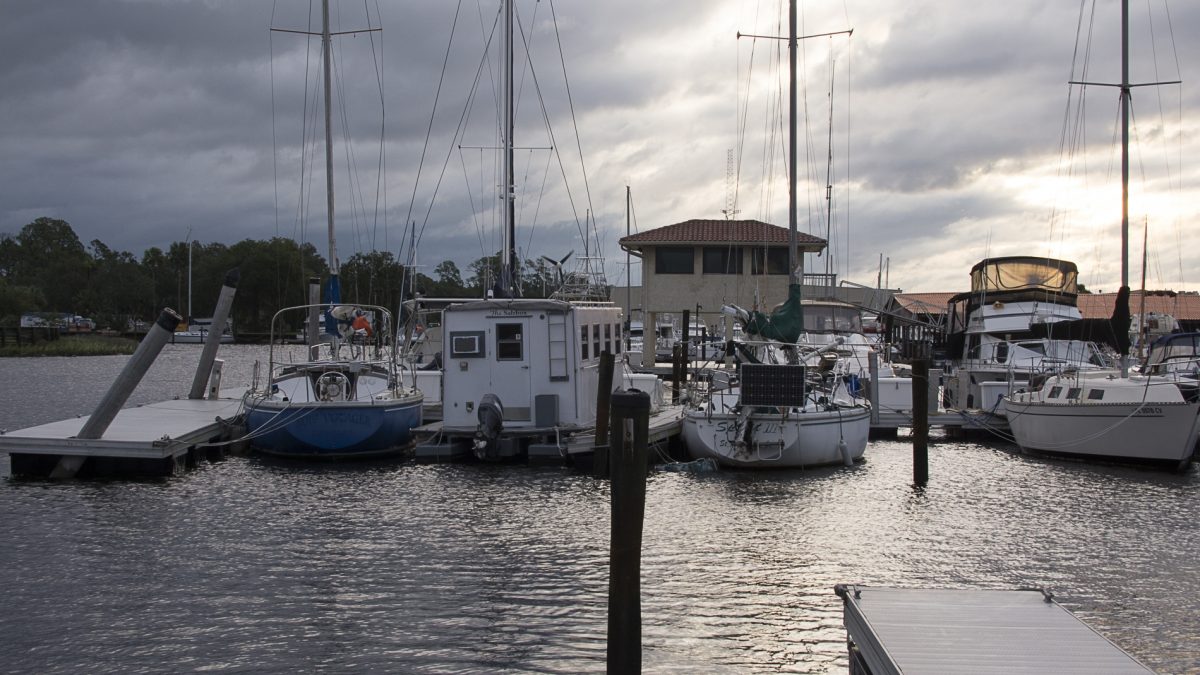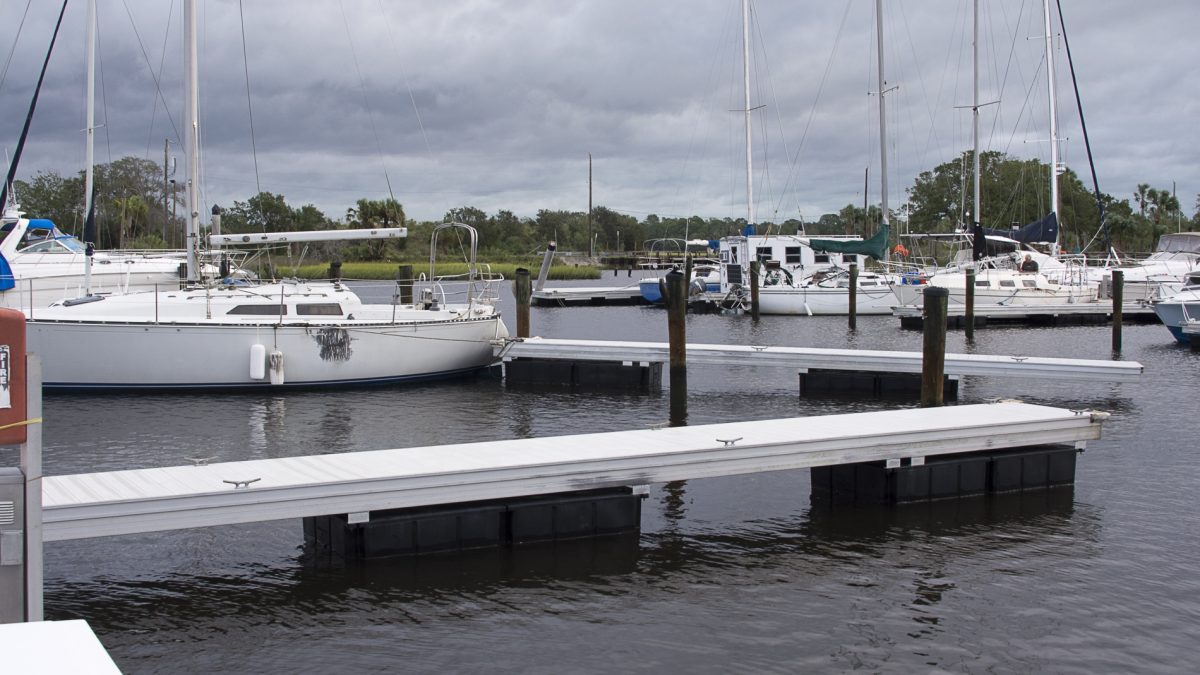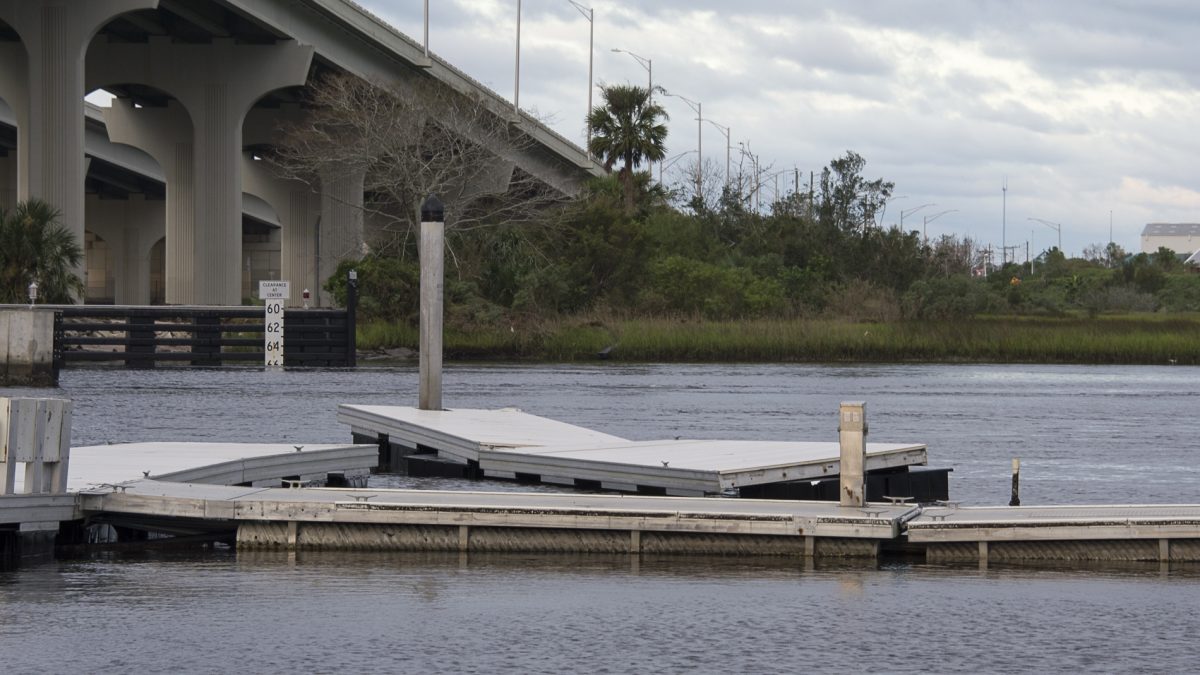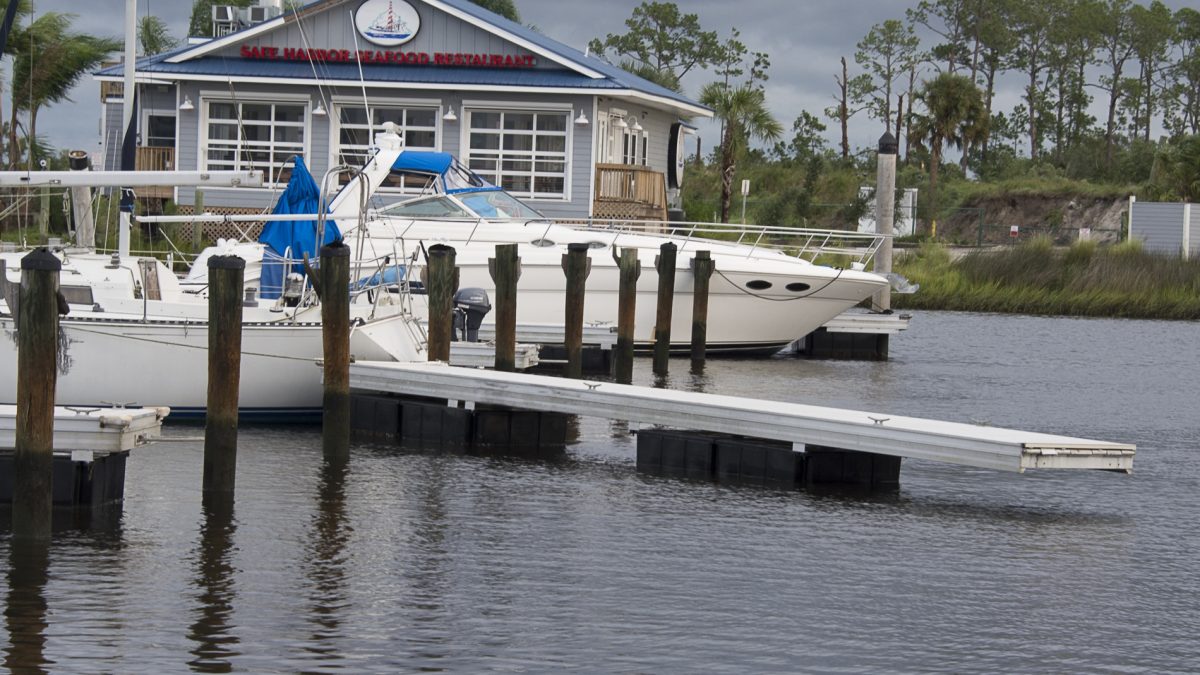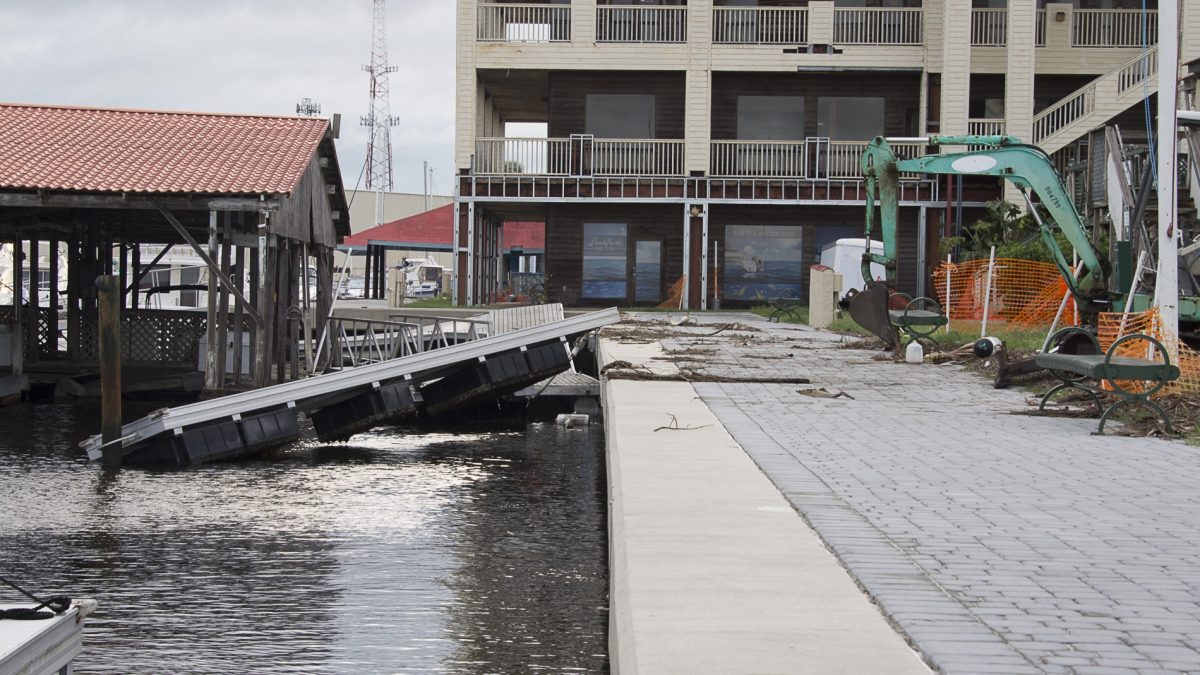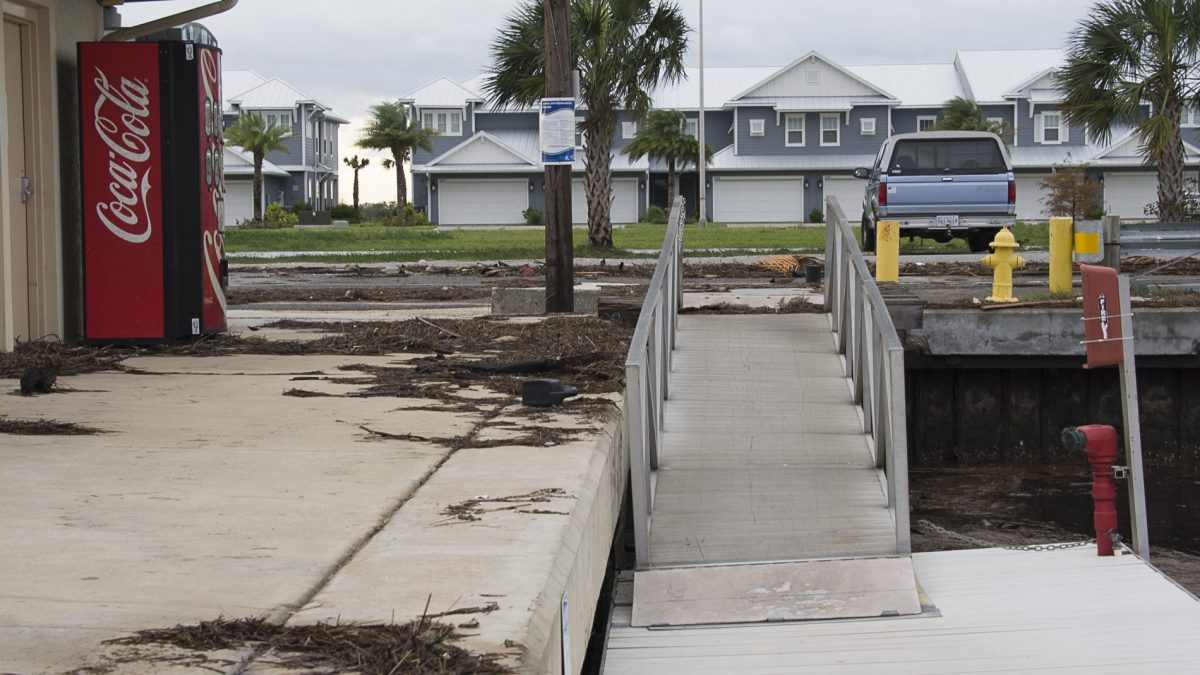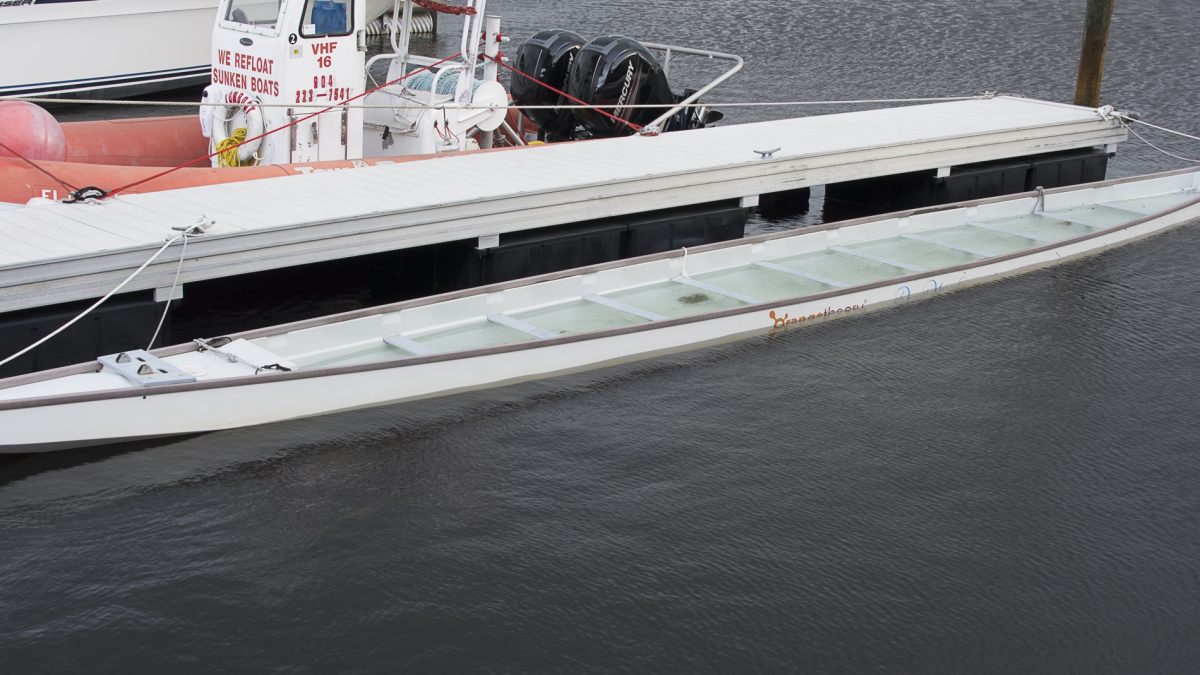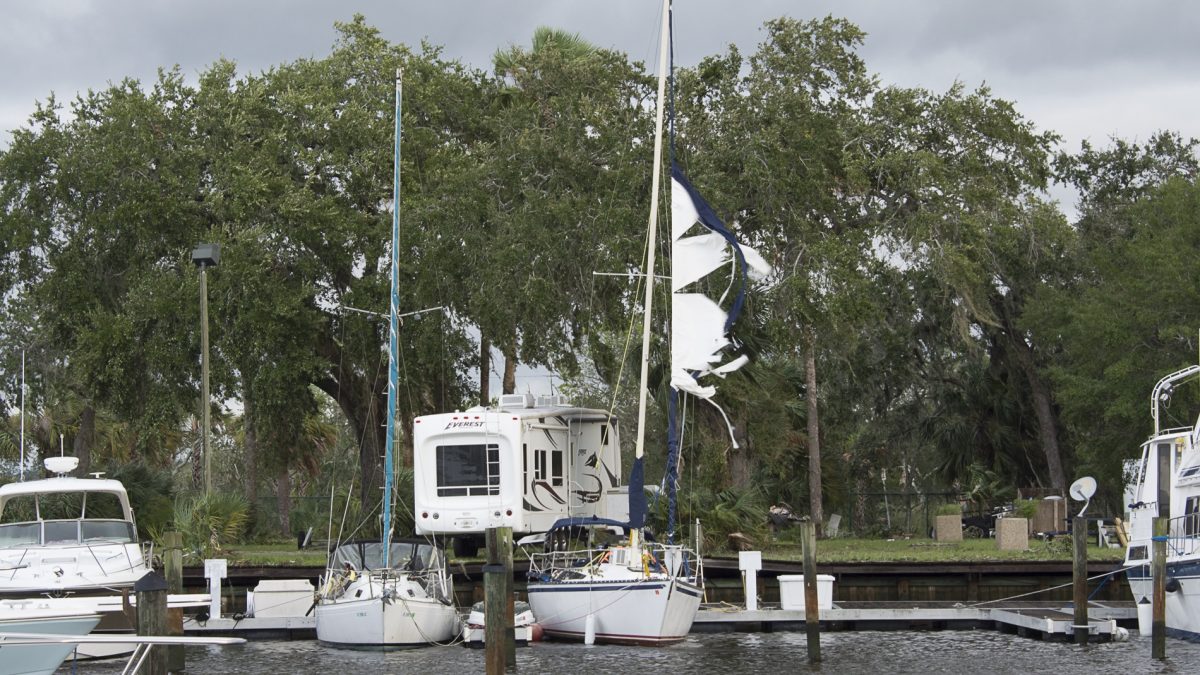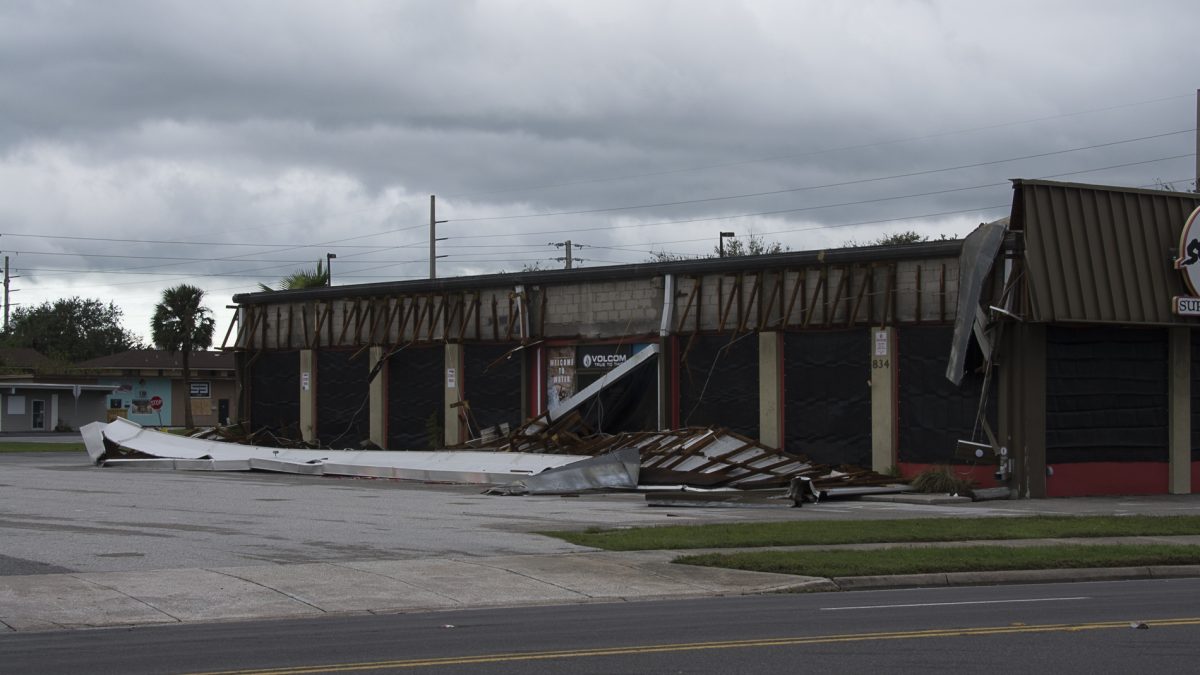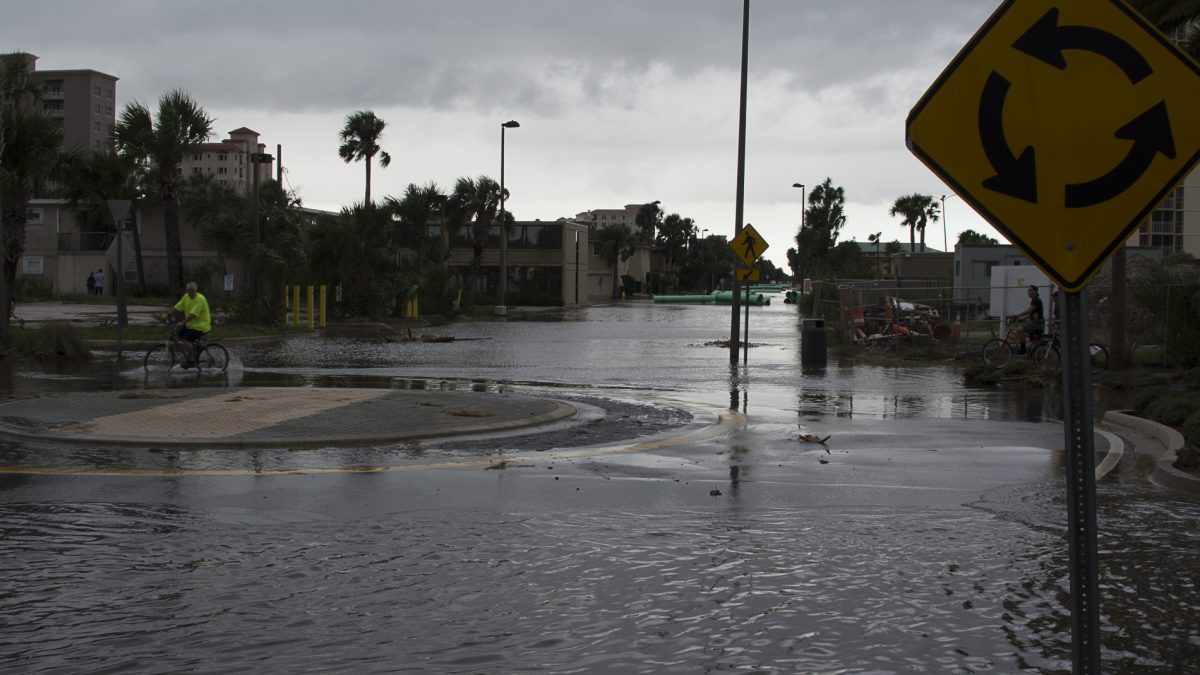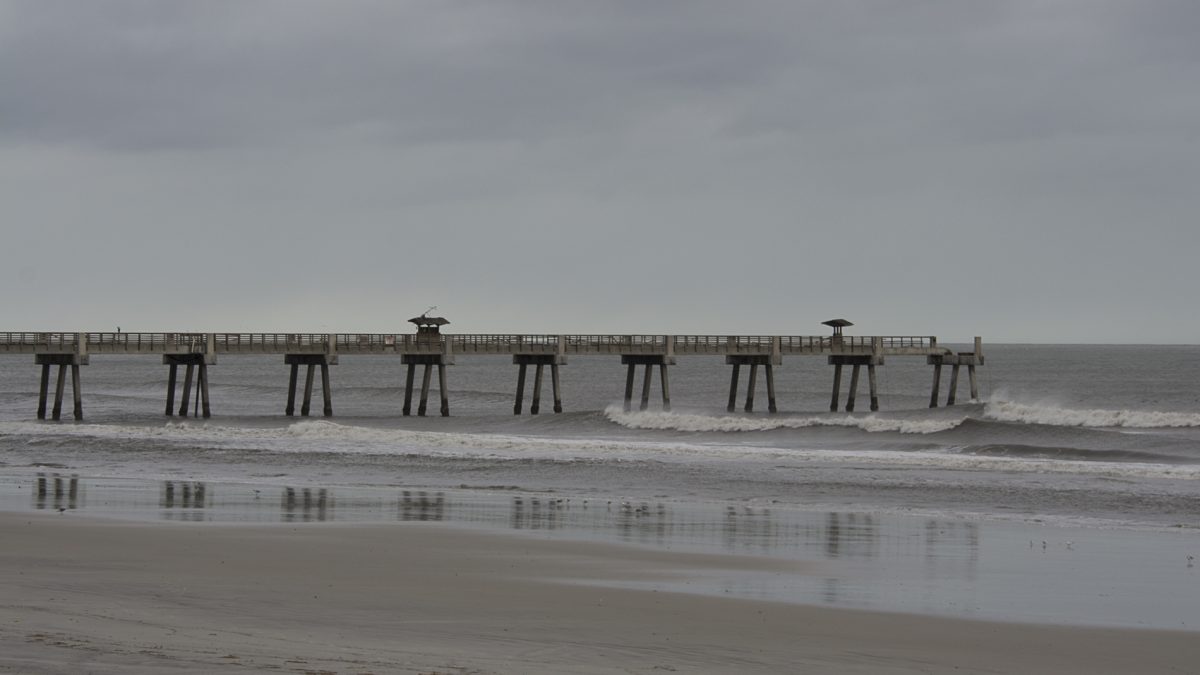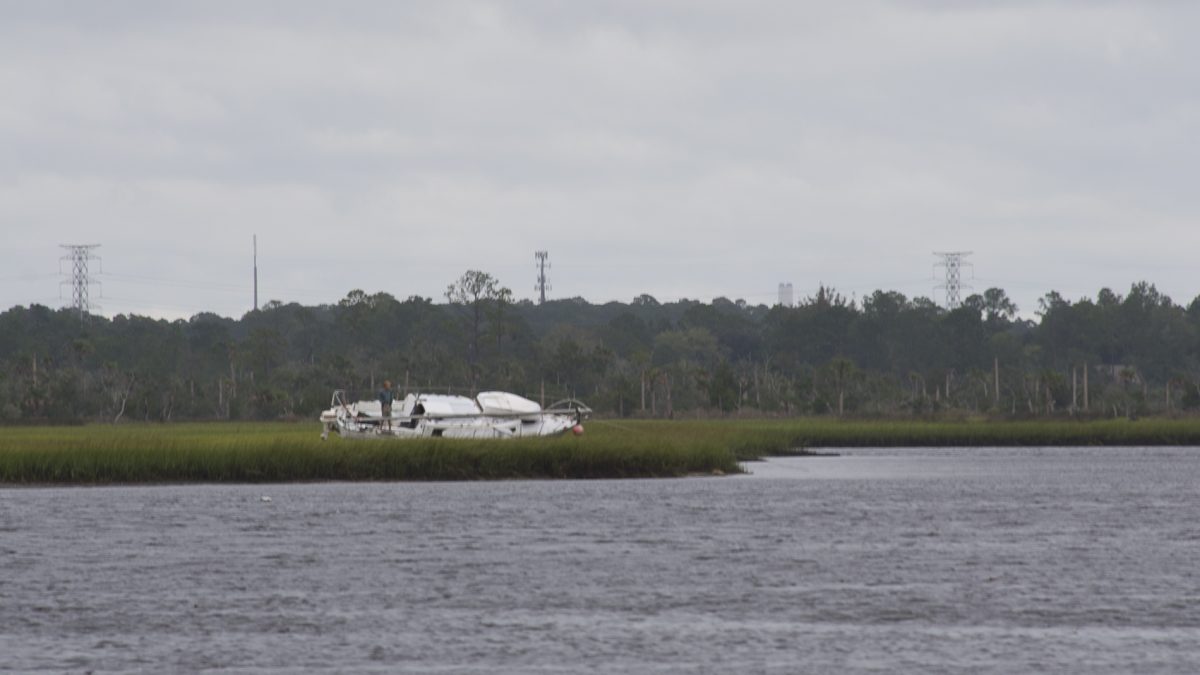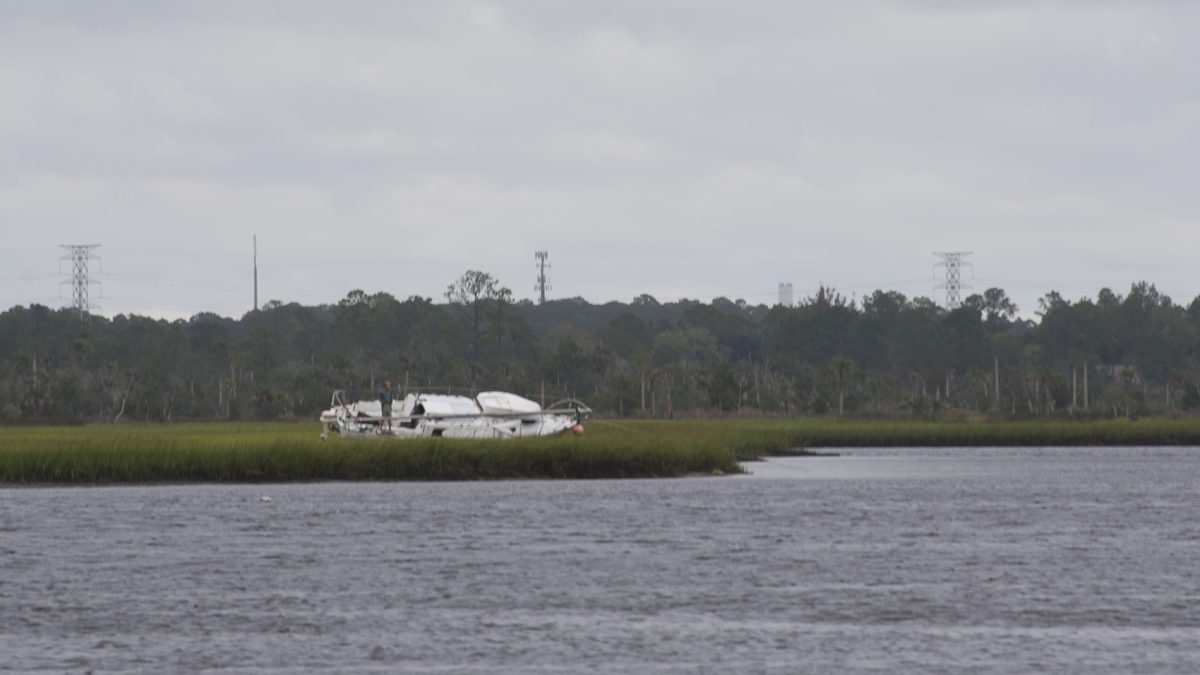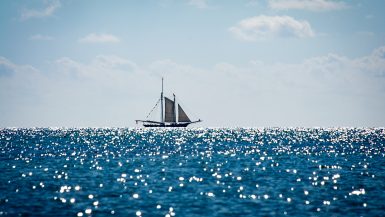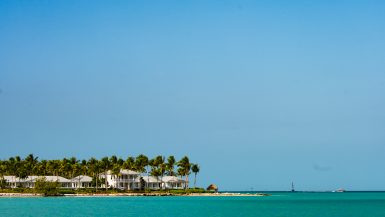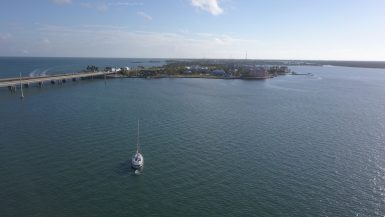Hurricane Matthew passed about 40 – 50 miles east of Jacksonville as a Category 3 hurricane on Friday the 7th of October. Pictures and videos at the end of the post.
Thursday the 6th of October was spent doing the final preparations. The hurricane would start with winds from the east and northeast, and these would be the strongest. So in addition to the two 5/16″ bowlines (Palani was facing directly east in her slip), I also used the 200′ of 1/2″ anchor rhode I had purchased to double up both of those lines as well. I ran spring lines (these are lines that run parallel to the side dock to the bow and stern of the boat to hold the boat from moving forward or backward in the slip) both fore and aft, doubling up on spring lines to the front (no real reason but the cleats were there and I had extra line). Since most of the wind was coming from the east I only had one stern line (5/16″) from the dockside. I also ran triple lines from the stern cleat that was on the opposite side to dock. This line I ran directly to the piling vs to a dock cleat, I also ran this line with slack in it. My thought at the time was that if the surge was extreme, this line could hold to the piling even if it was underwater (without pulling my boat under). This last minute idea turned very fortunate by the end of the storm.
The rest of the day was removing anything not bolted down to the deck, cushions, BBQ etc. By Thursday afternoon as the wind built I was feeling confident.
The majority of Friday was spent in waiting. The wind slowly built all day long, with frequent gusts that knocked Palani sideways. As I periodically ventured out into the wind and rain to check on things and take videos I was pleased to find Palani moved around a lot less than most of the other sailboats. With the wind sideways to the docks, the masts on the sailboats were providing a perfect purchase for the wind to rock them side to side in their slips.
While finances had a lot to do with my boat selection, I also had visions of sailing the oceans blue and wanted a boat that could handle the weather. I looked past modern designs that allow for more room in the cockpit for entertaining, faster lighter designs that are a pleasure to day sail (I’ve done some sailing on these types of boats in San Diego). One thing that came out of this experience was a confidence in the overall strength and stability of Palani. Many times during the storm I could easily travel from bow to stern safely, and being down below listening to the howling wind there was a calm as the hull and rigging withstood the forces placed against them.
This storm allowed me to adjust my list of projects for the Palani. At Tropical Storm levels the aft starboard fixed window leaks slightly (a towel thrown down handles the small drips) and there is a slight leak around the mast (the mast actually goes through my cabin top and is mounted on the bottom of the boat, there is a cloth “boot” that goes around the mast that is waterproof, I need to replace this boot). At Category 1 the second starboard fixed window develops a small leak (I need to replace all 4 fixed windows so these were not new concerns) and the main hatch develops a drip (which will make a line and drip where ever you are sleeping). At Category 2 all but one window develop small drips and the companion way cover develops a drip. Considering it takes 80mph winds to make this happen and they are only small drips it’s not surprising but still items I will address before sailing off.
From Thursday through around 6 pm on Friday there was nothing to do but wait out the storm. Then as the storm peaked around 7 pm on Friday the wind turned more towards the North and Northwest. This caused the water in the marina to become confused. As the waves adjusted to the change in the wind all the boats and the finger docks between the boats started to bounce fore to aft. The marina is made up of floating docks, with the main dock running down the length of the boats and smaller finger docks between every other boat. These finger docks are not attached to the pilings at the end, rather they have a hoop that wraps around the piling. With the storm surge (the parking lot across the way which is usually behind a 2′ sea wall was 3′ underwater) and the waves bounce my one fear came to happen. The finger docks went up and over the pilings finding freedom for the first time in their existence. With a northern angle still on the wind, the boats were pushed against the finger docks. Luckily Tom (my neighbor) and I had included a line to the pilings. This allows our dock to only move 2′ offline.
Sitting below on my settee distracted by my Kindle I heard the noise and felt the docks shift. I quickly switched to my wet clothes (I kept one set of clothes for going outside so as to limit the amount of water I dragged into the cabin) and jumped out the companionway. I quickly checked out my boat and Tom’s the neighbors for immediate issues. Due to the lines to the pilings, we weren’t going anywhere right away. I walked up and down Dock 2 to assess the situation in the stingy rain and wind. One of the large power boats had an extra 4 fenders on board. I placed two between them and the next boat over as the T-end was buckling and losing integrity. Next to Tom was an absentee owner of a sailboat (he’s down in South America), and the lines on this sailboat were old and there were no fenders between his and Tom’s boat. So I added the other two fenders to Tom’s boat in case the sailboat’s finger dock broke (I ran on that finger dock to check his lines and wasn’t sure it would last for me to get back to the main dock let alone the whole storm).
The rest of the day played on my nerves. I was starting to feel cabin fever (with the main sail, outside cushions and everything else in a not-big-to-start-with cabin). Everything was damp down below (seems the humidity is 100% in a hurricane) and you couldn’t open anything up for circulation. Every creak was for sure, at least in my mind, a precursor to the whole Jenga pile falling apart. I had become accustomed to the sounds, with the wind from the east and northeast, but as the storm passed and the wind cycled around first to the west, then southwest each sound was new and had to be investigated (what caused it, was it a problem, did I have a solution).
Slowly the night passed and led to a new daybreak. I walked the docks to see where we were. Palani has a 6″ area of shiny silver where the dock rubbed (when the docks went walkabout my fenders didn’t adjust and I wasn’t strong enough to push an 8-ton boat against 60 mph winds to make room for the fender). Luckily I hadn’t gotten to painting the hull yet so this is a non-issue. I then walked down to the beach in Jacksonville Beach. For the most part, I was surprised at the lack of damage. There was some flooding, one building had its facade taken off and the pier is missing the T section at the end. Mostly it looked like there was a lot of street clean up but things would be back to normal quickly.
Some lessons for next hurricane.
- Diversify food stuff. While I did a good job buying calories, quickly bored of the things I picked out.
- There can’t be too many lines
- More and bigger fenders. Have a couple in reserve.
- Not be in the path of a hurricane 🙂
Hurricane Matthew Videos
Hurricane Matthew – 10 Am on Friday
Hurricane Matthew – 1:45 pm on Friday
Hurricane Matthew – 6 pm on Friday
Hurricane Matthew – Saturday Morning
Hurricane Matthew – Pictures

